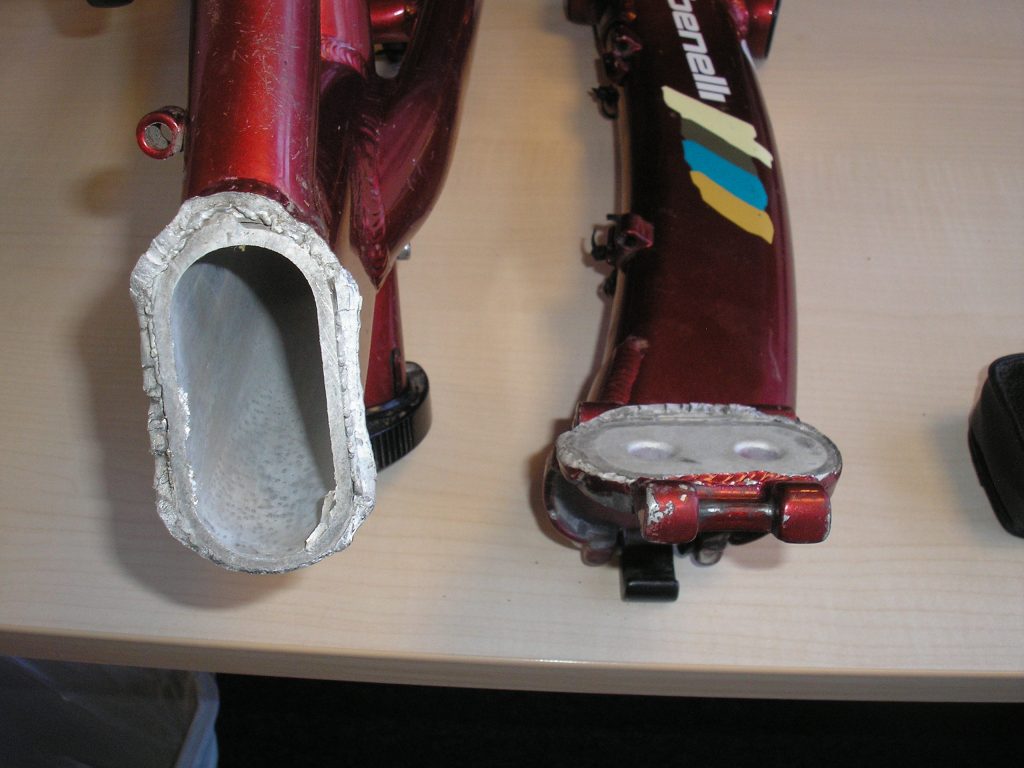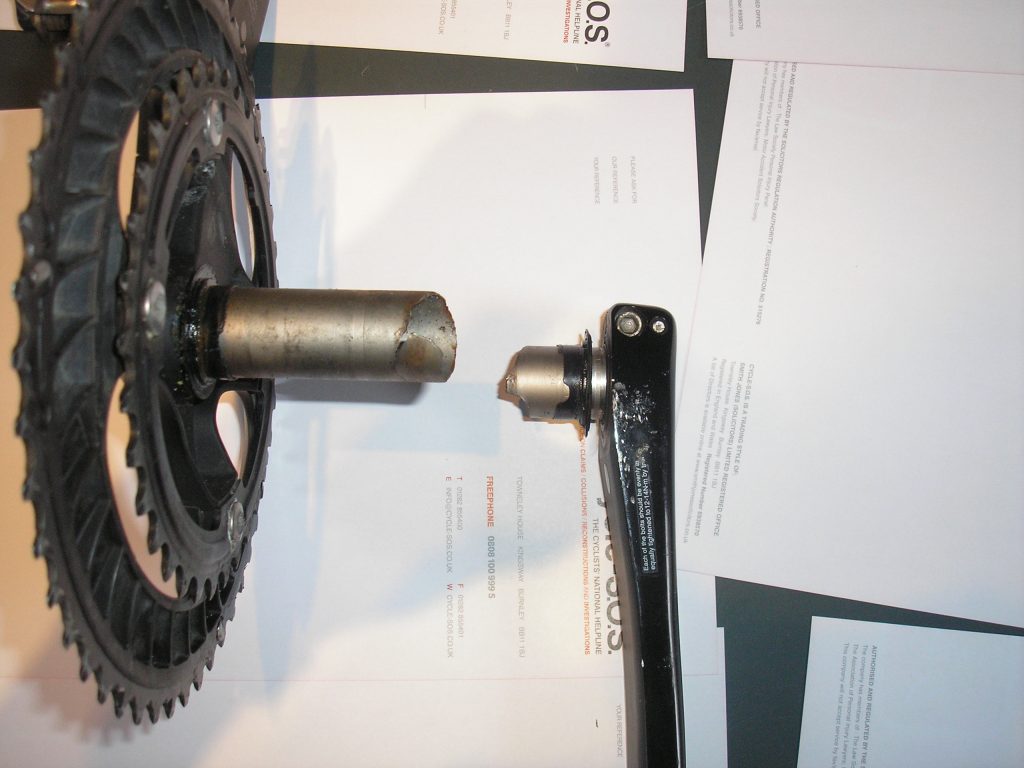Failed Bike.
Failures fall into several categories. Has a specific component in an as-supplied bike broken, either shortly after purchase or some time and distance down the line? Has there been a failure following a service or repair perhaps involving replacement of certain components? Or has a loan (hire) bike failed?

Each scenario may involve just an inconveniently failed component and nothing worse, or an ensuing crash, typically due to chain, crank, bottom bracket or fork and steerer, which has caused injury.
Or in the case of a certain national retailer, has the ‘mechanic’ simply forgotten to tighten something?
It’s the failure leading to injury with which we are interested and is addressed here. A non-injury failure ought to be covered by the Consumer Rights Act 2015 which sets out the rights of the consumer and the obligations on the retailer. There are many consumer web sites explaining this.
An injury crash merits careful investigation because the cycle trade’s public liability insurers which meet Product Liability claims appear to think that they are immune from responsibility and liability.
Search the scene for any debris like fork drop-outs, sheared bolts, pieces of carbon or ends of cranks.

Find evidence of purchase, whether receipt, finance agreement of bank/credit card statement.
Image the failed component if possible, without further dismantling. After an overall view, focus on the failure surfaces.
Search the forums on line for any recalls or similar happenings.
Then find a representative who can talk bike; you’ll soon realize if you have the real thing. If your contact is clueless, politely ask if there is anyone in the firm who maintains their own bike and request to speak with them, if there isn’t, it’s time to move on.
Avoid presenting the broken bike or component back to the supplier as it may then disappear into the system and be hard to retrieve.
Insurers’ repudiations include one or more of the following. Always.
- It’s not us (the retailer): you need to be chasing the manufacturer /importer /wholesaler instead.
This has a lot of relevance from a legal perspective, because it’s good to focus fire on whichever outfit will be signing the eventual cheque and cut out the intermediary. Difficulties arise if a key member of the triumvirate has gone broke: Moore Large is the recent example, which means there may be no option than to attack the retailer.
2. When one gets the relevant opponent in the frame, let’s say the concessionaire who imported the bike or component, their arguments will be that the cause of failure is due to lack of service by the owner, misuse, or an intervening incident which has caused BVID (barely visible impact damage).
It’s a really good idea to keep a Bike File with every expense from purchase recorded, particularly and professional servicing or repairs and a record of when any owner maintenance occurred, for example replacing cables, brake blocks or pads, bleeding brakes, new chain and the inspections whenever the bike has been cleaned.
The Law.
- The legal test is that of unsatisfactory quality. The law does not actually require a full forensic scientific analysis of the reason for the failure but an explanation of what happened and how it caused the loss is important.
- What a claimant must do is establish a defect in the product that caused recoverable loss. The key to liability is therefore to establish that the product was “defective”. There is a defect in a product if the safety of the product is not such as persons generally are entitled to expect.
